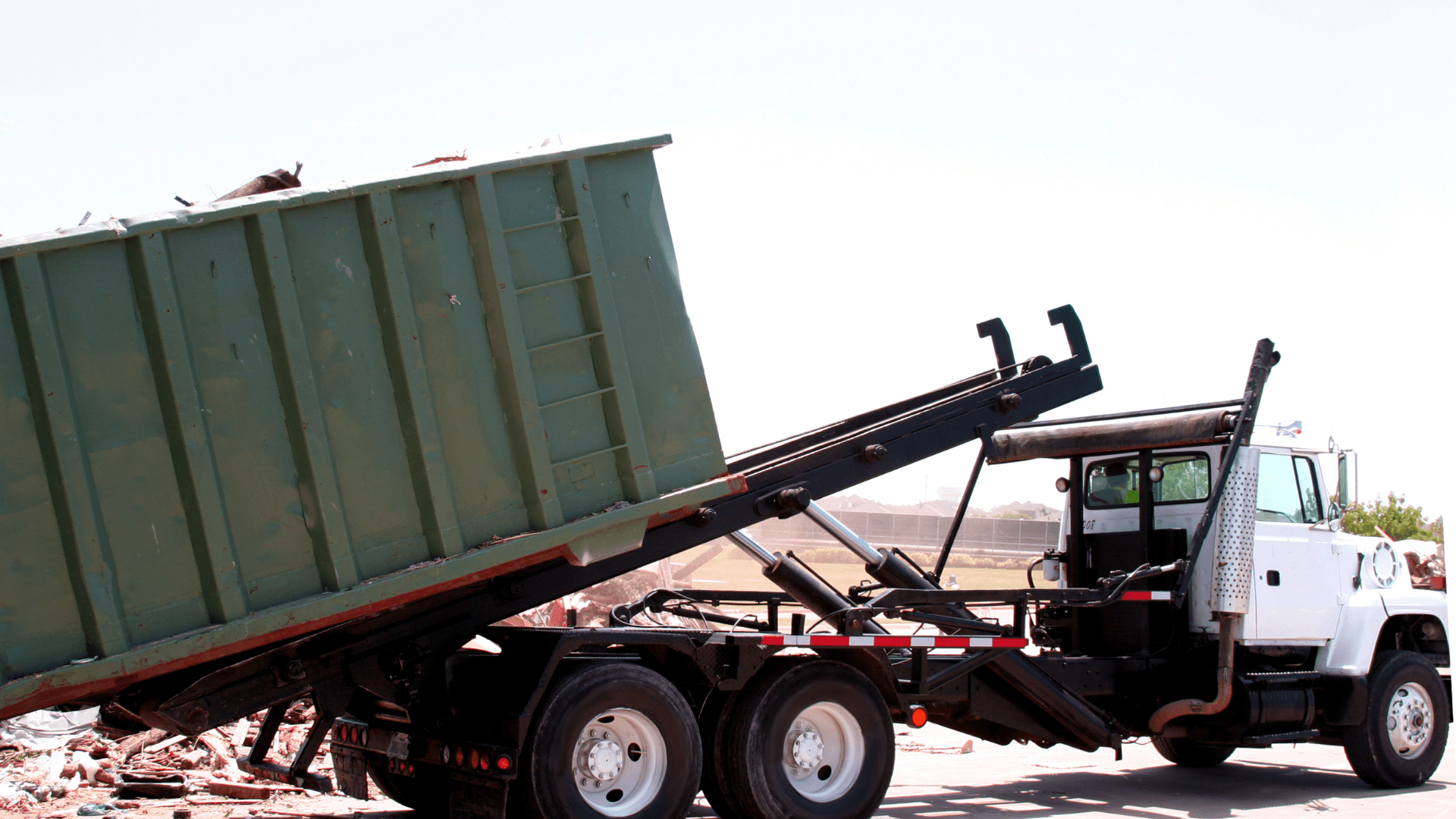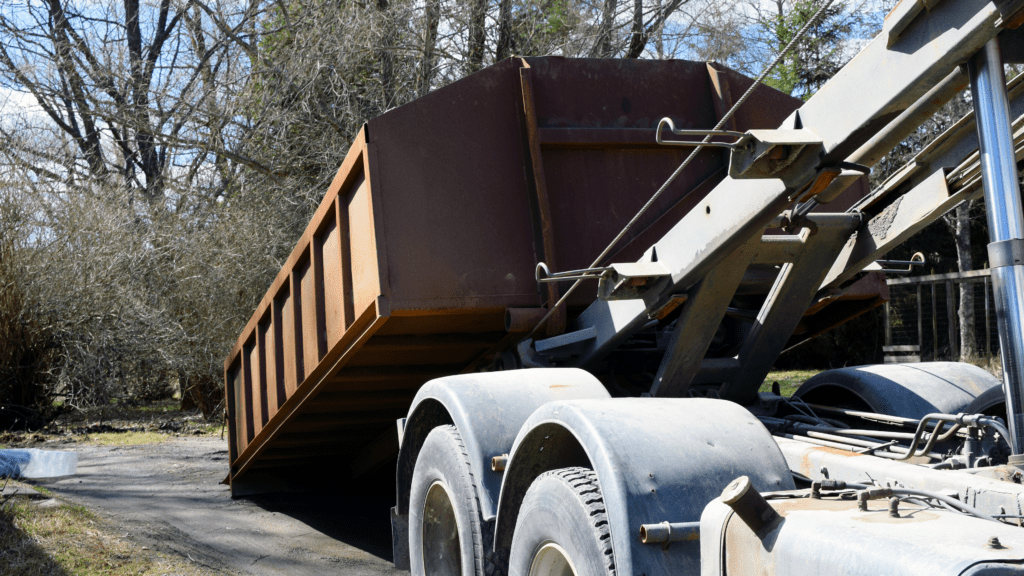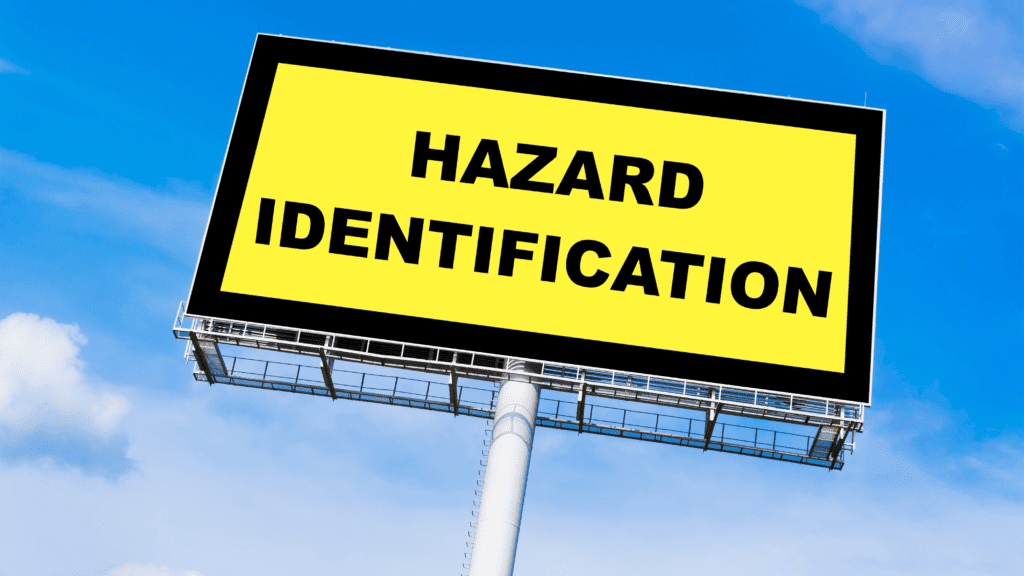20 Yard Dumpster: The Workhorse for Residential and Commercial Waste Solutions
Introduction to the 20-Yard Dumpster
A 20-yard dumpster is often called the “workhorse” of the dumpster rental world, and for good reason. This medium-sized dumpster strikes the perfect balance between capacity and convenience, making it one of the most versatile options available for both residential and commercial projects. Whether it’s a small home renovation or a light commercial construction job, a 20-yard dumpster has just the right amount of space for disposing of everything from construction debris to household clutter.
Why the 20-Yard Dumpster is So Popular
For many homeowners and contractors, the 20-yard dumpster is the go-to choice because it can handle a wide range of materials and project types. If you’re clearing out an entire house or renovating a few rooms, the 20-yard size is generally big enough to get the job done without overkill. In a commercial setting, it’s ideal for projects that produce a moderate amount of waste, such as office remodels or small retail renovations.
With enough capacity to manage both heavy and bulky items—like old furniture, appliances, and construction debris—yet compact enough to fit in most driveways or smaller job sites, it’s an easy, practical solution. You won’t have to worry about the dumpster taking over the entire work area, and you won’t end up paying for more space than you need.
The Practical Solution for Waste Removal
Because of its adaptability, a 20-yard dumpster is an excellent choice for waste removal across different settings. Unlike smaller dumpsters that might fill up too fast or larger ones that may be challenging to fit on-site, the 20-yard option hits a sweet spot for most users. Whether the task involves removing drywall, wood, carpeting, landscaping materials, or everyday junk, this dumpster size will likely meet the project’s needs without causing headaches.

Dimensions and Capacity of a 20-Yard Dumpster
When choosing the right dumpster for a project, it’s essential to know its exact dimensions and what it can realistically hold. A 20-yard dumpster provides a significant amount of space, with dimensions that make it practical for many different uses. This section breaks down the specifics of its size, capacity, and examples of what it can handle, giving you a clear picture of how it can work for your needs.
Typical Dimensions of a 20-Yard Dumpster
Most 20-yard dumpsters measure around 22 feet long, 8 feet wide, and 4.5 feet high. These measurements allow it to fit comfortably on most residential driveways and smaller commercial lots, while still offering enough volume to handle sizable loads. Compared to smaller dumpsters, which may only handle limited waste, the 20-yard size allows for larger projects without taking up a massive amount of space. This size strikes a balance between compact footprint and adequate capacity, making it the perfect fit for both urban and rural areas where space may vary.
Waste Capacity of a 20-Yard Dumpster
A 20-yard dumpster can hold around 20 cubic yards of waste, which is equivalent to about six pickup truck loads. This capacity is ideal for handling bulky items like furniture and appliances, as well as a substantial amount of renovation debris. In weight terms, many 20-yard dumpsters can handle between 2-4 tons, though exact weight limits depend on local regulations and the specific materials being disposed of. It’s always wise to consult with your rental provider about the weight limit for specific types of waste, especially if you’re dealing with heavier materials like concrete or dirt.
Examples of What a 20-Yard Dumpster Can Hold
Here’s a look at some typical projects and the waste a 20-yard dumpster can manage:
- Home Renovations: Perfect for tearing down a few walls, removing old cabinets, or replacing flooring throughout a home.
- Yard Cleanups: Holds large amounts of yard waste, such as branches, leaves, and even small trees and stumps.
- Garage or Basement Cleanouts: Ideal for clearing out years of old belongings, broken furniture, and general household junk.
- Commercial Projects: Handles moderate construction or renovation waste from office or retail projects, like drywall, shelving, and light fixtures.
By choosing a 20-yard dumpster, you’re getting a container that can handle an impressive amount of waste without overwhelming your property or workspace. Its dimensions and capacity make it a practical solution for a range of common residential and commercial projects.
Ideal Situations for Renting a 20-Yard Dumpster
The 20-yard dumpster is a versatile solution suited for a wide variety of projects. Its balance of size and capacity makes it an ideal choice for handling both residential and commercial waste. In this section, we’ll explore the types of projects where a 20-yard dumpster really shines, from home renovations to moderate commercial jobs.
Residential Projects: Home Cleanouts, Renovations, and Landscaping
A 20-yard dumpster is perfect for homeowners taking on larger cleanouts or remodeling projects. Here are some typical scenarios where this size is ideal:
- Whole-Home Cleanouts: For clearing out the contents of an entire house, a 20-yard dumpster can handle all kinds of household junk, from furniture to old appliances. This is particularly helpful for estate cleanouts or decluttering efforts.
- Renovations and Remodels: If you’re remodeling multiple rooms or making significant structural changes, like tearing down walls or replacing flooring, a 20-yard dumpster can handle the mix of debris generated. It’s big enough to hold large volumes of drywall, wood, and even cabinetry.
- Landscaping Projects: A 20-yard dumpster is also great for outdoor projects. Whether you’re redoing a large section of your yard, removing a shed, or getting rid of bulky yard waste, this size provides ample room for branches, soil, sod, and even small tree stumps.
Commercial Projects: Small Construction Sites, Office Cleanouts, and Retail Renovations
For businesses and contractors, the 20-yard dumpster provides the right balance of capacity and efficiency. It’s an excellent choice for jobs that need a bit more than a small dumpster but not as much as a massive roll-off container. Some ideal commercial uses include:
- Small Construction and Renovation Sites: For moderate commercial projects, like small retail build-outs or office remodels, the 20-yard dumpster fits well. It can handle debris from walls, flooring, fixtures, and more, without taking up too much space on a construction site.
- Office or Warehouse Cleanouts: When a business is clearing out an office, warehouse, or other workspace, a 20-yard dumpster can easily manage unwanted office furniture, shelving, outdated equipment, and miscellaneous items that no longer serve a purpose.
- Retail Renovations and Relocations: For retail stores upgrading their look or relocating, a 20-yard dumpster is ideal for managing debris from interior changes, old fixtures, and excess inventory.
Special Event Cleanups and Community Projects
The 20-yard dumpster isn’t only for construction and renovations; it’s also a great choice for temporary cleanup needs like community events or neighborhood cleanups. Its size allows it to handle large volumes of trash and recyclables, keeping these events tidy without requiring multiple dumpsters.
In all these scenarios, the 20-yard dumpster is a cost-effective and space-efficient choice. It’s big enough to tackle significant projects, yet compact enough to fit on most properties or job sites without causing disruption.

Advantages of Choosing a 20-Yard Dumpster for Your Project
A 20-yard dumpster stands out as one of the most practical choices for a wide range of projects, offering a balanced mix of space, cost-efficiency, and versatility. Here are the main reasons why a 20-yard dumpster is such a popular option for both residential and commercial use.
1. Versatility for Various Projects
The 20-yard dumpster is one of the most versatile sizes available. It’s big enough to accommodate waste from larger home cleanouts, medium-sized renovation projects, and even small commercial construction jobs. Whether you’re clearing out an attic, remodeling a kitchen, or handling waste from a small construction site, the 20-yard dumpster has the space and durability needed to handle mixed loads, such as:
- Household junk, like old furniture and broken appliances
- Remodeling debris, such as drywall, tile, wood, and carpet
- Yard waste, including branches, stumps, and large bags of leaves
- Small construction materials, like bricks, concrete, and scrap metal in limited amounts
Its adaptable size makes it a one-stop solution for customers handling a variety of projects.
2. Cost-Effective Size
For most medium-sized projects, a 20-yard dumpster offers the best value. Renting a larger dumpster than you need can result in unnecessary costs, while choosing a smaller one can lead to multiple hauls or added fees. With its capacity for handling about six pickup truck loads of waste, a 20-yard dumpster gives you ample space without requiring the premium price of a larger container.
Because the 20-yard size often fits the needs of medium to larger residential jobs and many small commercial projects, it’s an efficient, cost-effective option that minimizes the hassle and expense of frequent emptying or swapping out smaller dumpsters.
3. Easy Placement on Residential and Commercial Sites
One of the biggest advantages of a 20-yard dumpster is that it’s large enough to hold substantial waste but compact enough to be easily placed on driveways, small lots, and tight job sites. Its footprint is manageable, meaning it won’t dominate the space or interfere with the flow of work. Here’s where its moderate size can be especially useful:
- Residential Settings: A 20-yard dumpster can typically fit on a driveway without blocking access to the garage or other entry points.
- Commercial Projects: It’s compact enough to be positioned strategically on a construction site, allowing easy access for loading without taking up valuable work space.
In rural settings, where access to wide open areas may be less of a problem, a 20-yard dumpster provides just enough room to handle waste efficiently while keeping everything contained and easy to transport when ready.
4. Environmentally Friendly Waste Disposal
Using a 20-yard dumpster can also be an environmentally responsible choice. Because it has the right amount of space for mid-sized projects, you avoid making multiple trips with smaller loads, reducing fuel consumption and emissions associated with transportation. Many dumpster rental services also sort and recycle applicable materials, allowing you to dispose of waste in a way that minimizes environmental impact.
5. Low Risk of Overloading
Overloading a dumpster can lead to additional fees, damaged equipment, and even safety hazards. The 20-yard size makes it easier to manage loading efficiently without surpassing weight limits, even for heavier materials like wood or tile. Unlike smaller dumpsters that may quickly fill up, the 20-yard dumpster offers ample room, helping you avoid the need to pile materials too high and reducing the likelihood of overloading fees.
In sum, a 20-yard dumpster provides all the advantages of flexibility, affordability, and convenience, making it a smart and practical solution for a wide range of projects. Whether for a major cleanout or a remodeling project, its balanced size meets the needs of many clients, ensuring that waste is managed efficiently and safely.
What Can and Cannot Go into a 20-Yard Dumpster
Knowing what materials are allowed in a 20-yard dumpster is crucial to making the most of your rental while avoiding potential extra fees or safety hazards. While these dumpsters can handle a wide range of waste types, certain items are typically restricted due to environmental regulations, safety concerns, or landfill requirements. Let’s dive into what you can and cannot dispose of in a 20-yard dumpster.
Acceptable Materials for a 20-Yard Dumpster
A 20-yard dumpster is designed to handle a broad mix of materials, which makes it an excellent choice for projects like cleanouts, remodels, and small construction jobs. Here’s a breakdown of what is generally allowed:
- Household Items: Old furniture (like couches, chairs, and tables), mattresses, toys, and general household junk are all permitted.
- Construction and Renovation Debris: Drywall, wood, flooring materials, cabinetry, tiles, shingles, and siding from remodeling projects can be safely disposed of.
- Yard Waste: Leaves, branches, shrubs, and even small tree stumps are typically acceptable, making this dumpster ideal for yard cleanup and landscaping projects.
- Appliances (with restrictions): Many appliances, such as microwaves, stoves, and washing machines, are accepted as long as they don’t contain hazardous materials like refrigerants (e.g., freon). Some providers may require these appliances to be free of fluids or ask that specific parts be removed beforehand.
Items That Are Typically Restricted
While a 20-yard dumpster can accommodate various materials, some items are generally prohibited for legal and environmental reasons. Here are common items that should not go into a dumpster:
- Hazardous Materials: This includes chemicals, pesticides, asbestos, and other toxic substances. These materials are harmful to both people and the environment and must be disposed of at specialized facilities.
- Electronics (in some areas): Many landfills do not accept items like televisions, computers, and other electronics due to the presence of hazardous components like lead and mercury. Check with your rental provider for specific guidelines, as some areas may allow electronics.
- Tires: Most dumpster rental companies do not accept tires, as they require separate disposal and recycling due to the materials they’re made from. In many locations, tires can be recycled through specialized programs or facilities.
- Batteries and Fluorescent Bulbs: Car batteries, lithium batteries, and fluorescent bulbs contain toxic chemicals and should not be thrown in with general waste. They can typically be taken to recycling centers.
- Large Quantities of Heavy Materials: If you’re disposing of extremely heavy items like concrete, bricks, or soil, you may exceed the weight limit for a 20-yard dumpster. Many providers allow a limited amount of these materials, but it’s essential to clarify the specifics with your rental company to avoid additional fees.

The Importance of Following Disposal Guidelines
Adhering to your dumpster rental provider’s guidelines on acceptable and restricted materials isn’t just about avoiding fees; it’s about ensuring safe and environmentally responsible waste management. Disposing of prohibited items improperly can result in fines, and some hazardous items can cause safety hazards for waste handling staff and landfill operators.
If you’re unsure whether an item can go into the dumpster, don’t hesitate to ask your provider. Many rental companies offer guidance on alternative disposal options for restricted items, which could include recycling centers, hazardous waste facilities, or specialized pickup services.
Tips for Loading Your 20-Yard Dumpster Efficiently
To make the most of your 20-yard dumpster, it’s helpful to have a plan for loading it effectively:
- Break Down Large Items: Disassemble bulky furniture and other items to maximize space.
- Distribute Weight Evenly: Place heavier items on the bottom to prevent overloading one side and avoid tipping hazards.
- Layer Materials: Place larger, flatter items first, then fill in smaller spaces with bags and other loose items.
Following these tips, along with the guidelines on allowed materials, will help you get the most out of your 20-yard dumpster rental and keep the disposal process smooth, safe, and compliant.
How Much Does Renting a 20-Yard Dumpster Cost?
One of the most common questions about renting a 20-yard dumpster is the cost. While the price varies depending on several factors, understanding what goes into the final cost can help you plan your budget and avoid unexpected fees. Here, we’ll look at the average price range, factors that affect the cost, and tips to make the most of your rental investment.
Average Cost of a 20-Yard Dumpster Rental
On average, renting a 20-yard dumpster typically costs between $300 and $600 for a standard 7-10 day rental period. The exact cost depends on several factors, including your location, the type of waste being disposed of, and local disposal fees. Urban areas tend to have higher prices due to increased landfill fees, while rural areas might offer more affordable rates.
Keep in mind that while this average range provides a good estimate, the final cost could be higher or lower depending on your unique project needs and local provider rates.
Factors That Influence 20-Yard Dumpster Rental Costs
Several factors impact the total cost of a 20-yard dumpster rental. Being aware of these can help you understand where your money goes and how to control costs effectively:
- Location and Local Disposal Fees: Disposal costs can vary widely depending on your location. Urban areas often have higher landfill fees, which can raise the price of your rental. In rural areas, rates may be lower, but availability can also impact cost.
- Weight Limit and Overage Fees: Most 20-yard dumpsters come with a weight limit, usually between 2-4 tons. Exceeding this limit can lead to additional charges. Heavier materials like construction debris, concrete, or soil can quickly add up, so it’s important to monitor your waste weight if your project includes these materials.
- Type of Waste: Some materials require special handling and disposal, which can affect the price. For instance, disposing of construction debris, yard waste, or heavy items like roofing shingles may incur higher fees than regular household junk due to their weight or handling requirements.
- Rental Duration: Most companies offer a standard 7-10 day rental period, but longer projects may require additional rental days. Extending your rental period usually incurs a daily or weekly fee, which can add up quickly if not planned for.
- Additional Services (e.g., permits, delivery fees): If you need your dumpster delivered to a hard-to-reach location, or if your project requires a permit for placing a dumpster on a public street, these services can add to the total cost.
Tips for Saving Money on a 20-Yard Dumpster Rental
Here are a few practical tips to help keep your dumpster rental costs manageable:
- Plan Your Rental Period Carefully: Schedule your dumpster rental during the period when you’ll need it most. This helps avoid paying for unused days or rushing your project to avoid overages. Completing as much preparation work as possible before the dumpster arrives, such as sorting and staging debris, can make the rental period more efficient.
- Be Mindful of Weight Limits: Overloading the dumpster with heavy materials like concrete or dirt can lead to weight overage fees. If you’re working with a significant amount of heavy waste, talk to your provider about the best options for managing this weight within your rental budget.
- Avoid Prohibited Materials: Restricted items like hazardous waste or electronics not only add cost but can also lead to hefty fines if accidentally included. Check with your rental provider for clear guidelines on what can and cannot go in the dumpster.
- Get Multiple Quotes: Pricing varies among providers, so it’s worth getting quotes from a few local companies. Make sure each quote includes all fees, such as delivery, pickup, and any possible overage charges, so you can make an informed comparison.
- Ask About Flat-Rate Pricing: Some providers offer flat-rate pricing that includes all fees, including disposal and weight, which can be helpful for staying within budget. Flat-rate options can also save you from unexpected charges, especially if your project involves various types of waste.
Setting Realistic Cost Expectations
Understanding how pricing works for a 20-yard dumpster rental can help you set realistic expectations for your project budget. By being proactive and clarifying costs upfront, you can avoid surprises and focus on completing your project efficiently. Most importantly, choosing the right dumpster size for your needs will help you manage waste effectively without overspending on unneeded space.
With proper planning and a clear understanding of rental costs, a 20-yard dumpster can be a valuable tool for a wide range of projects without breaking the bank. Whether you’re handling a home cleanout or a light commercial job, this size offers the right balance of affordability and functionality for practical, cost-effective waste management.
Tips for Maximizing Your 20-Yard Dumpster Rental
Renting a 20-yard dumpster is a smart choice for tackling a range of projects, but maximizing your rental can help you save time, money, and hassle. From loading the dumpster efficiently to avoiding common rental pitfalls, here are some tips to get the most out of your 20-yard dumpster.
1. Load the Dumpster Efficiently
Proper loading helps you make the most of your dumpster space, which can save you from needing a second container or facing overage fees. Here are some strategies for efficient loading:
- Break Down Bulky Items: Large furniture, like couches and tables, can take up a lot of space. Disassemble items as much as possible to fit more into the dumpster.
- Place Heavy Items on the Bottom: Start with heavier materials, such as old furniture or construction debris, at the base of the dumpster. This not only balances the load for safe transport but also prevents lighter items from getting crushed.
- Fill Gaps with Smaller Items: After loading bulky items, fill in empty spaces with smaller items and loose debris. This layering technique maximizes space and keeps everything compact.
2. Avoid Overfilling the Dumpster
While it’s tempting to pile items above the top rim, overloading can lead to additional charges or delays in pickup. Dumpster rental companies generally require that waste doesn’t extend above the container’s edge for safe transport. Here’s how to avoid overloading:
- Check the Fill Line: Many dumpsters have a visible fill line indicating the maximum height for waste. Respecting this limit keeps the rental company’s safety guidelines intact.
- Distribute Weight Evenly: Loading heavy items on one side only can cause tipping or unbalanced loads, leading to complications during pickup.
If you realize your project will produce more waste than initially expected, contact your rental provider for options, which might include a “swap out” (replacing your full dumpster with an empty one) or upgrading to a larger dumpster.

3. Adhere to Waste Restrictions
Understanding and following your rental provider’s restrictions on materials can help you avoid additional disposal fees and penalties. Here are some tips to keep your load compliant:
- Separate Hazardous Materials: Items like paints, chemicals, and certain electronics are usually restricted and can’t go in the dumpster. Set these items aside for specialized disposal.
- Know the Weight Limits for Heavy Debris: While 20-yard dumpsters can handle a wide range of materials, be cautious with heavy items like concrete, bricks, or soil. Exceeding weight limits can incur additional fees. For projects involving lots of heavy debris, consider discussing options with your rental company.
4. Schedule Your Rental Wisely
Timing is key when renting a dumpster. Renting for a longer period than needed can lead to additional fees, while cutting your rental period short can mean rushing your project. Here’s how to make the most of your rental window:
- Plan Ahead and Stage Debris: Preparing your waste materials before the dumpster arrives allows you to load it right away, making efficient use of your rental period.
- Choose the Right Start Date: Schedule the dumpster delivery for the day you’re ready to start working, and aim to complete your project within the rental period to avoid extension fees.
5. Avoid Mixing Certain Types of Waste
Some dumpster rental companies have different fees for specific waste types. Mixing construction debris with household waste, for example, can sometimes lead to increased costs. If your project includes both types, confirm with your rental provider about any restrictions or cost implications.
6. Confirm Pickup Instructions
When your rental period is up, it’s helpful to confirm pickup details with your rental provider. Ensure that:
- Access is Clear: Make sure nothing is blocking access to the dumpster, such as parked vehicles or equipment, to avoid delays or return fees.
- All Waste is Within Guidelines: Double-check that all items comply with the provider’s restrictions, ensuring a smooth pickup and disposal process.
7. Understand Your Options if You Need More Time or Space
If your project ends up requiring more time or producing more waste than planned, it’s better to address this before your rental period expires. Here are some options:
- Request an Extension: Most companies allow you to extend your rental period for an additional daily fee.
- Arrange a “Dump and Return” Service: Some providers offer a service where they empty your dumpster and return it, letting you continue your project without paying for a second full rental.
By following these tips, you’ll not only maximize the value of your 20-yard dumpster but also minimize potential issues and costs. Proper planning, careful loading, and respecting weight and material guidelines go a long way in making your dumpster rental as cost-effective and convenient as possible.
A 20-yard dumpster typically requires an area of around 22 feet long by 8 feet wide, with a clearance height of about 4.5 feet. This size allows it to fit comfortably on most residential driveways and small commercial lots. To ensure smooth delivery and pickup, allow for extra space around the dumpster, especially if your project involves a busy or confined area.
Yes, a 20-yard dumpster can handle heavy materials like concrete, bricks, and dirt, but be mindful of weight limits. Most 20-yard dumpsters have a limit of around 2-4 tons. For projects involving large amounts of heavy debris, check with your rental provider about weight restrictions and additional costs, as exceeding weight limits may incur overage fees.
Standard rental periods for a 20-yard dumpster range from 7 to 10 days. However, many companies offer flexibility, allowing you to extend the rental period if needed for a daily or weekly fee. Be sure to confirm rental duration and extension fees with your provider to plan for any unexpected delays.
Permits are usually not required for placing a dumpster on private property, such as your driveway. However, if you need to place the dumpster on a public street or sidewalk, many municipalities require a permit. Contact your local city or county office to find out about any permit requirements and fees, or ask your rental provider for guidance.
The price of a 20-yard dumpster rental depends on factors such as location, weight limits, type of debris, and rental duration. Urban areas with higher disposal fees generally have higher rental prices. The type of waste and any additional services, like extended rental or heavy debris handling, can also affect the cost.
While versatile, a 20-yard dumpster may not be suitable for projects involving very large or exceptionally heavy waste loads. For large construction sites with extensive waste, like demolition debris, or projects with high volumes of concrete or dirt, a larger dumpster or specialized heavy-duty options may be more appropriate.
Many dumpster rental companies offer delivery within 1-2 business days, although availability may vary based on your location and the time of year. For the best chance of securing the dumpster size you need, especially during peak seasons like spring and summer, it’s recommended to book as early as possible.


